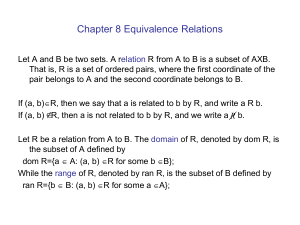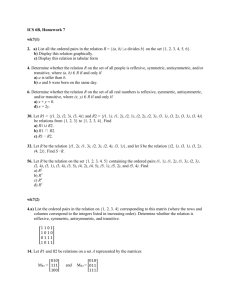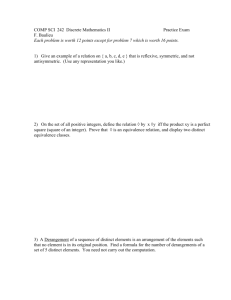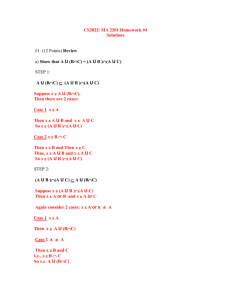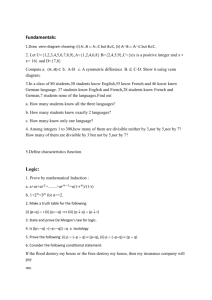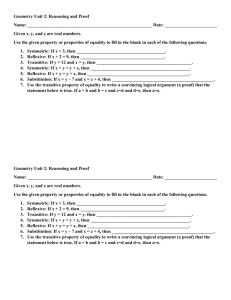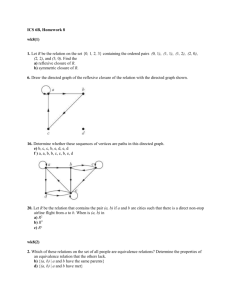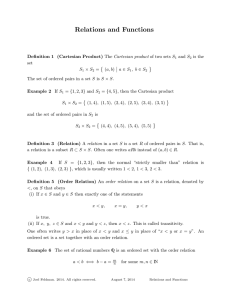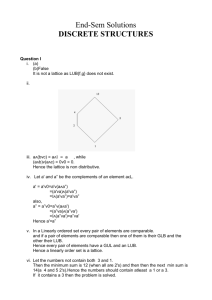LETTER OF INTENT
advertisement
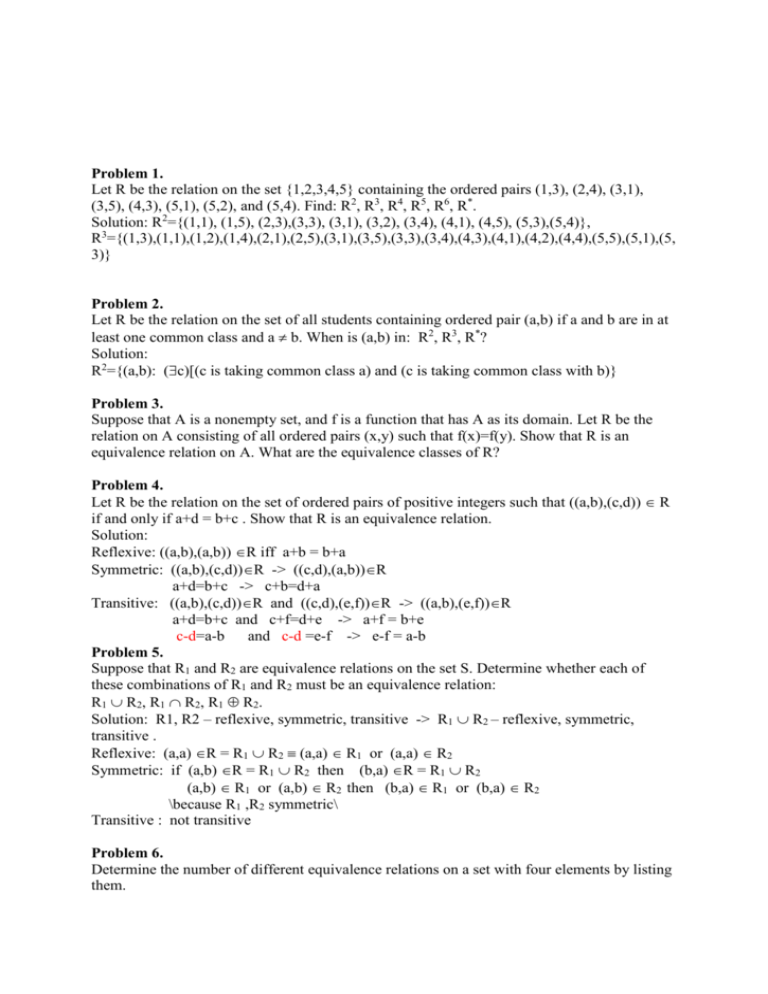
Problem 1.
Let R be the relation on the set {1,2,3,4,5} containing the ordered pairs (1,3), (2,4), (3,1),
(3,5), (4,3), (5,1), (5,2), and (5,4). Find: R2, R3, R4, R5, R6, R*.
Solution: R2={(1,1), (1,5), (2,3),(3,3), (3,1), (3,2), (3,4), (4,1), (4,5), (5,3),(5,4)},
R3={(1,3),(1,1),(1,2),(1,4),(2,1),(2,5),(3,1),(3,5),(3,3),(3,4),(4,3),(4,1),(4,2),(4,4),(5,5),(5,1),(5,
3)}
Problem 2.
Let R be the relation on the set of all students containing ordered pair (a,b) if a and b are in at
least one common class and a b. When is (a,b) in: R2, R3, R*?
Solution:
R2={(a,b): (c)[(c is taking common class a) and (c is taking common class with b)}
Problem 3.
Suppose that A is a nonempty set, and f is a function that has A as its domain. Let R be the
relation on A consisting of all ordered pairs (x,y) such that f(x)=f(y). Show that R is an
equivalence relation on A. What are the equivalence classes of R?
Problem 4.
Let R be the relation on the set of ordered pairs of positive integers such that ((a,b),(c,d)) R
if and only if a+d = b+c . Show that R is an equivalence relation.
Solution:
Reflexive: ((a,b),(a,b)) R iff a+b = b+a
Symmetric: ((a,b),(c,d))R -> ((c,d),(a,b))R
a+d=b+c -> c+b=d+a
Transitive: ((a,b),(c,d))R and ((c,d),(e,f))R -> ((a,b),(e,f))R
a+d=b+c and c+f=d+e -> a+f = b+e
c-d=a-b
and c-d =e-f -> e-f = a-b
Problem 5.
Suppose that R1 and R2 are equivalence relations on the set S. Determine whether each of
these combinations of R1 and R2 must be an equivalence relation:
R1 R2, R1 R2, R1 R2.
Solution: R1, R2 – reflexive, symmetric, transitive -> R1 R2 – reflexive, symmetric,
transitive .
Reflexive: (a,a) R = R1 R2 (a,a) R1 or (a,a) R2
Symmetric: if (a,b) R = R1 R2 then (b,a) R = R1 R2
(a,b) R1 or (a,b) R2 then (b,a) R1 or (b,a) R2
\because R1 ,R2 symmetric\
Transitive : not transitive
Problem 6.
Determine the number of different equivalence relations on a set with four elements by listing
them.
